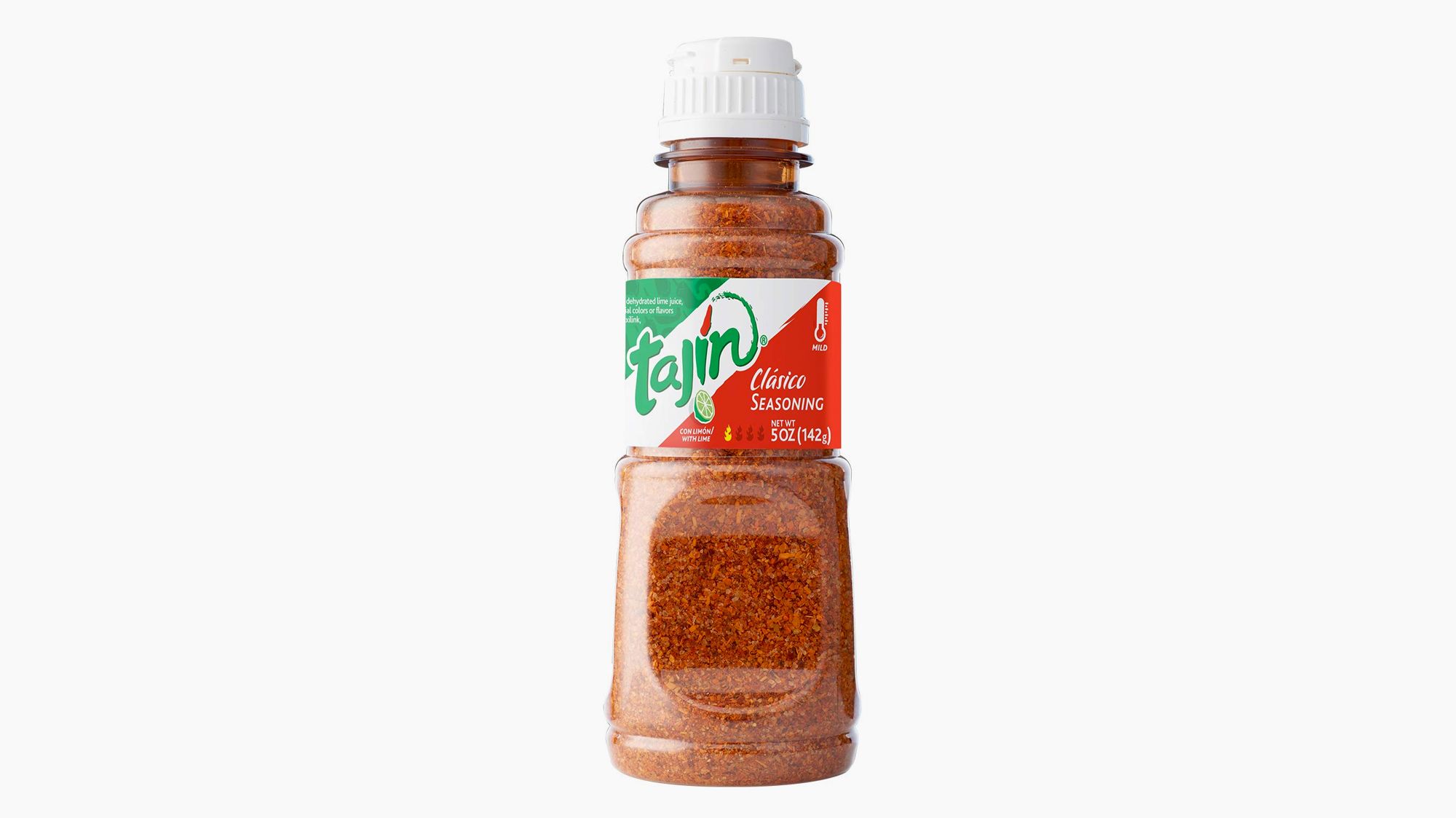
Tajín has never shied away from its Mexican heritage. Each bottle of this bright-red seasoning is decorated in the colors of its home country’s flag, and its unique flavors are true to the spirit of the foods countless residents grew up savoring. It’s just as welcome on shrimp and chicken as it is on ice cream and fruit salads—and it seems like new uses for it are being dreamed up every day by natives of Mexico and a global food scene that has embraced its trademark kick. Learn more about the seasoning taking over households and tabletops all over the world.
What is Tajín?
What is generally referred to as Tajín (pronounced ta-HEEN) is actually the name of the company; the seasoning is just called Tajín Clasico. Similar to products like Chapstick and Kleenex becoming forever linked with their associated products, the seasoning is mostly known by its company’s name.
Founded in 1985 by Horacio Fernandez, the seasoning was originally based on a sauce created by his grandmother, according to Thrillist. The powder he came up with is made of a combination of chiles de árbol, guajillo, and pasilla; sea salt; and dehydrated lime, giving it its signature spicy, tangy flavor. The name itself came about while Fernandez was on a trip to El Tajín, a pre-Columbian archeological site in southern Mexico, where he learned that the Uzo-Aztecan word for chile was aji.
The marriage of peppers and citrus brings out a mild heat and brightness that gives foods a pleasant sharpness. Due to Tajín’s success in Mexico, the product made its debut in the United States in 1993 and has since exploded in popularity. Today, it’s easier than ever to get your hands on the stuff, considering it lines shelves everywhere from mom-and-pop food shops to big-box warehouses like Costco.
The product’s following has ballooned across borders and continents in recent years, so much so that The New York Times has called Tajín a “lifestyle” among a new generation of foodies who might not even know about its Mexican roots. Javier Leyva, the U.S. director of Tajín International, stated that 40 percent of sales now occur north of Mexico and that the company sold more than 22 million pounds of product in 35 countries in 2018.
How To Use Tajín
The combination of citrus and chile spice far predates the creation of Tajín—in Mexico, that flavor profile can be found on everything from candies to desserts. But Tajín’s mass production hasn’t made it lose any of its authenticity.
“When I started making paletas [ice pops], I wanted people to experience that fruit and chile combo,” Fany Gerson, a Mexican-born chef who owns the dessert café La Newyorkina in Brooklyn, tell us. “I tried different [chili powders], and [found] that Tajín’s the one … It’s not too spicy; it’s more acidic than anything. We go through so much that I joke that they should just sponsor us.”
Gerson’s fruit-laden ice pops and sorbets are both perfect landing spots for a sprinkling of that trademark Tajín spice, but, then again, so are countless other foods in need of a little punch. Tajín can make fruits and vegetables, like mangoes, jicama, watermelon, and cucumbers, pop off the plate. It can also be added to butter-soaked corn, either on the cob or popped into a bowl. For simplicity’s sake, you can just toss it into a marinade for chicken or fish.
In the summer, though, one of the most popular uses of Tajín is for Micheladas, a Mexican beer cocktail made with lime juice, tomato juice, and assorted spices. Its use in cocktails has gotten so popular that the company even released a seasoning rimmer version of it just for those occasions.
Where to Find It
Tajín is available in most supermarkets. You can also find the product online on Amazon. The product is available in a 5-ounce two-pack, a 14-ounce bottle, or you can get the variety pack to try out different versions of the product. And if you want to find out how to make your own paletas, you can find Gerson’s recipe book here.
Sign Up Today: Get exclusive deals, product news, reviews, and more with the Mental Floss Smart Shopping newsletter!
What Is Tajin? A Brief History of Mexico’s Citrusy, Spicy Phenomenon
Source: Philippines Wonders
0 Comments